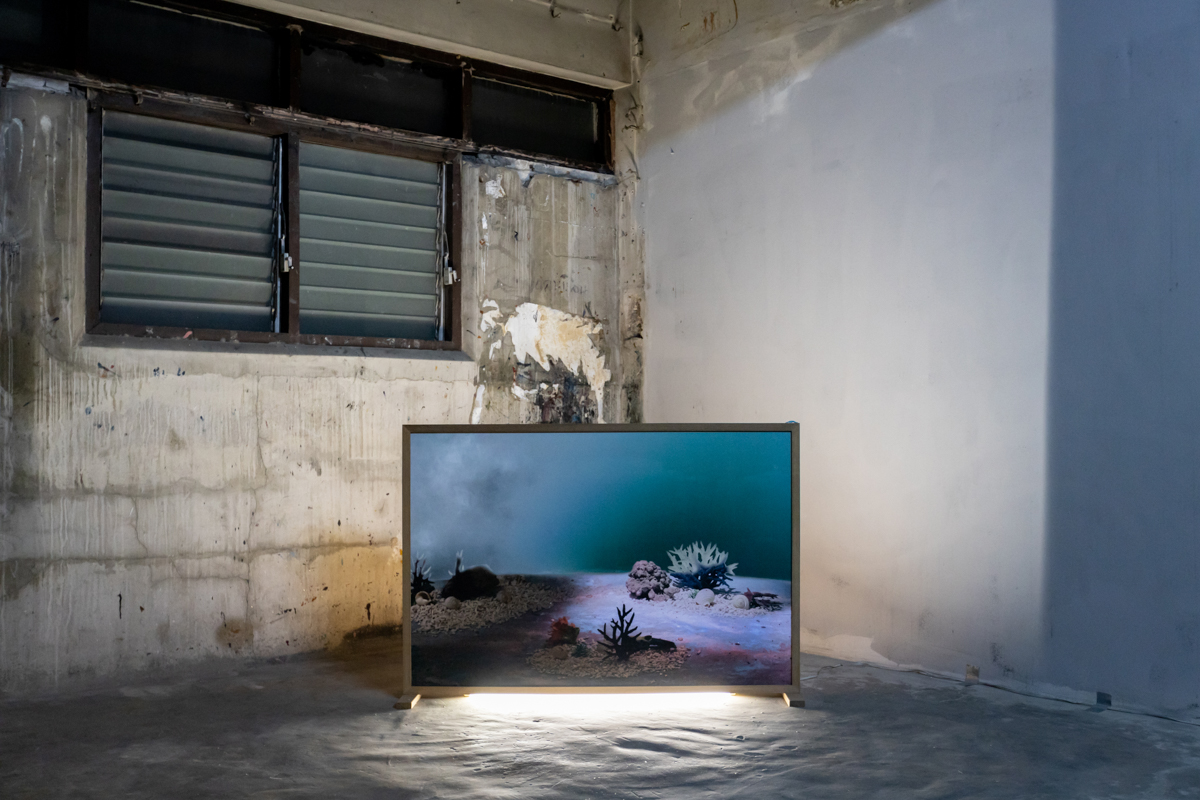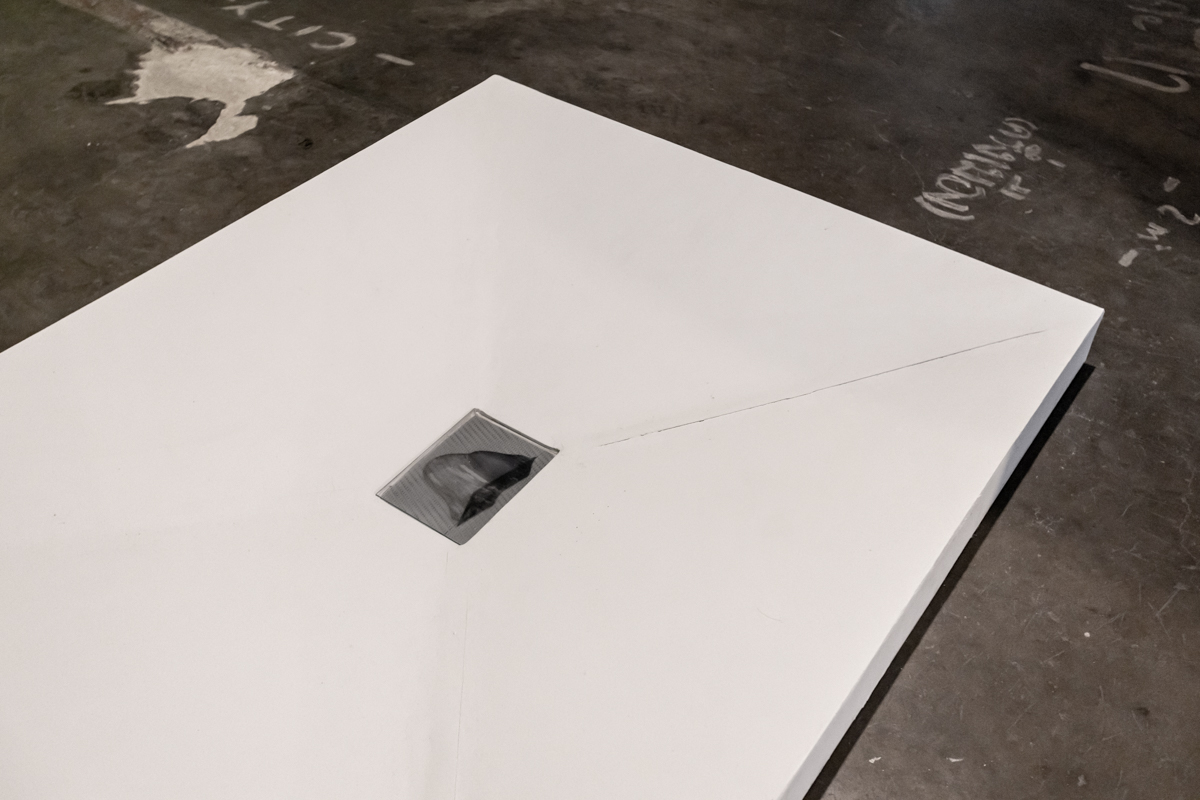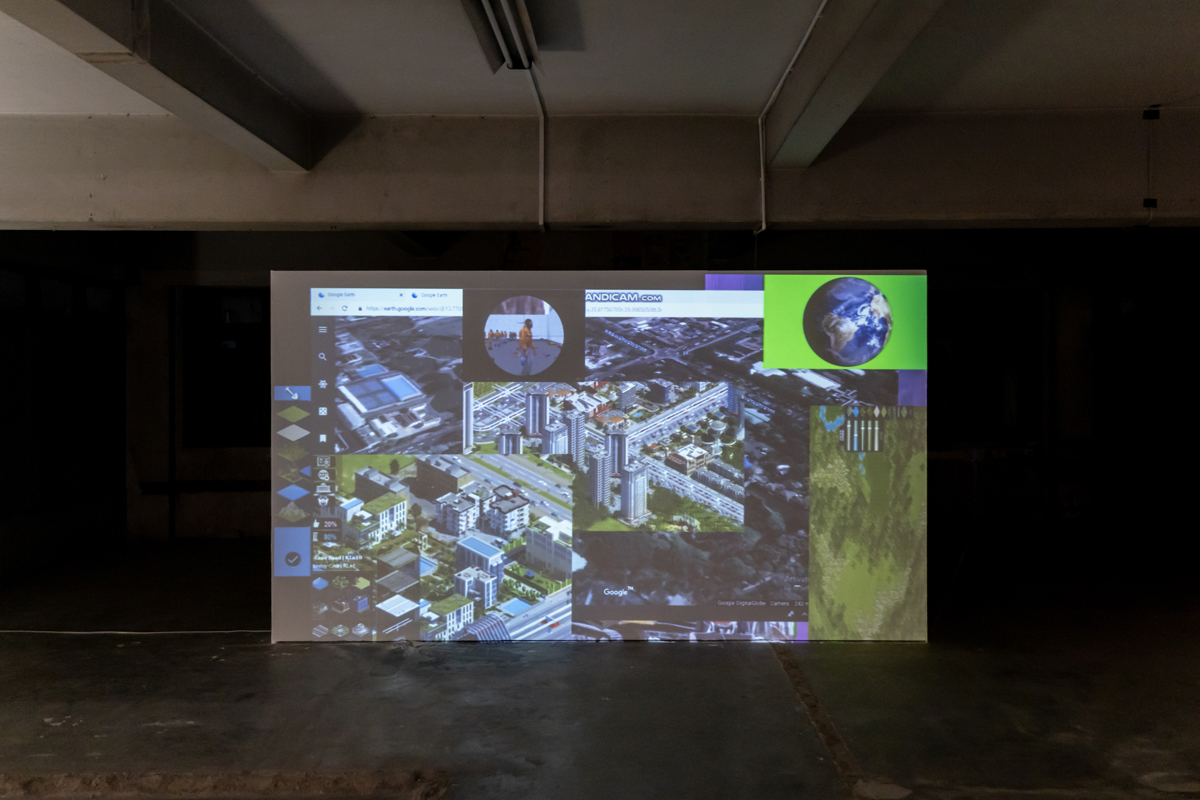WHILE ONE OF THE MOST IMPORTANT ZOOS IN BANGKOK IS WAITING TO BE TRANSFORMED, THE TWO ARTISTS, TAMMARAT KITTIWATANOKUN AND ANON CHAISANSOOK EXHIBITS ARTWORKS THAT ARE DEVELOPED THROUGH THE INTERPRETATION OF OVERLAPPED ELEMENTS FOUND INSIDE THIS URBAN ZOO.
TEXT: SUTEE NAKARAKORNKUL
PHOTO: KETSIREE WONGWAN
(For English, please scroll down)
สิ่งที่มาคู่กันกับการขยายตัวของเมืองคือระยะห่างระหว่างมนุษย์กับธรรมชาติที่กว้างขึ้นตาม หากมองในแง่เศรษฐกิจแล้ว ปฏิเสธไม่ได้ว่ามูลค่าสูงลิ่วของที่ดินนั้นเหมาะกับสิ่งปลูกสร้างที่สามารถเพิ่มมูลค่าให้ราคาที่ดินสูงยิ่งขึ้นไปอีก มากกว่าสวนหรือป่า เมื่อพื้นที่สีเขียวกับเมืองอยู่ร่วมกันได้ยาก สวนสัตว์คงเป็นหนึ่งในไม่กี่พื้นที่ทางธรรมชาติในเมืองที่สามารถตอบสนองความต้องการพื้นที่สีเขียวของคนเมืองได้ แม้จะมาในรูปแบบของสิ่งเสมือนจริง หรือระบบนิเวศจำลองที่มนุษย์สร้างขึ้นให้เหมือนกับที่อยู่อาศัยตามธรรมชาติของสัตว์นานาชนิดก็ตาม
นิทรรศการ Almost Nature โดยศิลปิน ธรรมรัตน์ กิตติวัฒโนคุณ และ อานนท์ ไชยแสนสุข เริ่มต้นจากความสนใจในประวัติศาสตร์เฉพาะพื้นที่ภายในสวนสัตว์เก่าแก่อายุกว่า 80 ปี (ขณะนี้ปิดตัวลงแล้ว) ซึ่งทั้งคู่ก็ต่างมีมุมมองต่อสิ่งต่างๆ ที่ซ้อนทับกันบนพื้นที่แห่งนี้ไปตามความสนใจของแต่ละคน

Natural Wonders (2018-19)
ผลงานของธรรมรัตน์ เป็นการทดลองกับกระบวนการทำงานของภาพถ่าย ในซีรีส์ Natural Wonders (2018-19) ศิลปินนำเอาภาพประหลาดๆ ที่เขาเห็นจากการเยี่ยมชมสวนสัตว์ ไม่ว่าจะเป็นรูปปั้นนกคอหัก เพ้นท์ติ้งฉากกรงขังสัตว์ หรือการตกแต่งกระถางต้นไม้ที่หมุนเวียนเปลี่ยนลักษณะใหม่ทุกเดือน มาพิมพ์ลงบนวัตถุที่เขาจำลองมาจากร้านขายของที่ระลึกในสวนสัตว์ เช่น เสื้อยืด แก้วกาแฟ และล็อคเก็ต ก่อนที่จะนำของที่ระลึกเวอร์ชั่น replica เหล่านั้นมาจัดวางเป็นงานอินสตอลเลชั่น “การเลือกแต่ละภาพมันสัมพันธ์กับวัสดุมากกว่า อย่างงานล็อกเก็ต 3 ชิ้น ที่ด้านหน้าเป็นรูปสัตว์บนฉากหลังห้องพิพิธภัณฑ์ ส่วนด้านหลังเป็นดินที่เก็บมาจากสวนสัตว์ เรามองแล้วรู้สึกเหมือนอนุสรณ์สถานของบางอย่าง” ธรรมรัตน์บอกกับ art4d

Natural Wonders (2018-19)
ความเป็นอนุสรณ์สถานที่ว่าทำให้ภาพถ่าย (ความทรงจำส่วนตัว) มีความหมายซ้อนทาบลงบนของที่ระลึก ที่อยู่ในฐานะวัตถุทางความทรงจำแบบ “ทางการ” ของสวนสัตว์ นอกจากนั้น การใช้ล็อคเก็ตเล่าเรื่องยังมีโทนของการย้อนกลับไปหาเรื่องราวในประวัติศาสตร์ หรือพูดอีกแบบก็คือ การพลิกเอาประวัติศาสตร์ในวัตถุออกมาให้ถูกเห็นและพิจารณาอีกครั้ง
เมื่อประวัติศาสตร์เป็นเรื่องของอดีตมันจึงเป็นเรื่องของเวลา Reality Overlap (2019) เป็นภาพถ่ายภายในสวนสัตว์จาก Google Street View เทคโนโลยีการทำแผนดิจิตอลที่กลายเป็นช่องโหว่ทางมิติเวลา (ที่ซ้อนอยู่บนหน้าจอคอมพิวเตอร์เรานี่เอง) ที่อนุญาตให้เราสามารถชะโงกหน้าเข้าไปดูกายภาพของอดีต อย่างไรก็ตาม กายภาพที่ถูกบันทึกด้วยกล้องก็เป็นระนาบที่แข็งทื่อ บางวัตถุในภาพซ้อนกัน บ้างก็เกิดหลุมบ่อสีดำบนพื้นผิว เป็นความไม่สมบูรณ์ของ archive ที่บอกกลายๆ ว่าบางอย่างสามารถบันทึก แต่ไม่อาจถ่ายทอดความจริงอย่างเป็นธรรมชาติ (ปกติ) ได้ แม้กระทั่งสิ่งที่เรียกว่าภาพถ่าย (โดยเฉพาะในยุคดิจิตอล)
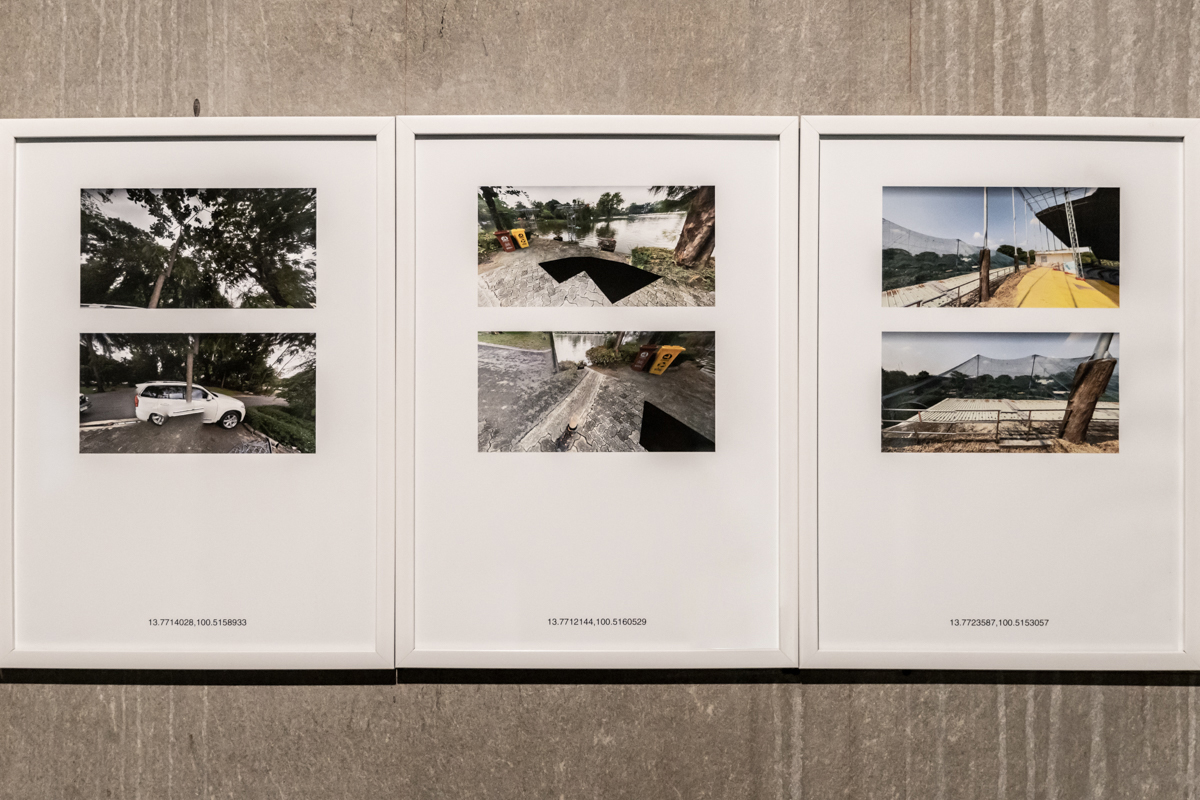
Reality Overlap (2019)
ในขณะที่งานของธรรมรัตน์ใช้ object ที่สัมพันธ์อย่างชัดเจนกับสวนสัตว์ อานนท์กลับทิ้งหลายๆ องค์ประกอบที่เป็นสวนสัตว์ไป แต่ก็พยายามคงโครงสร้างแนวคิดบางอย่างไว้นั่นคือ “ธรรมชาติเสมือนจริงของสวนสัตว์” แนวคิดข้างต้นปรากฏใน not likely to change or fell; firmly established (2018) ผลงานวิดีโอที่เป็นภาพการซ้อนทับกันของโปรแกรมคอมพิวเตอร์หลายหน้าจอ ศิลปินหยิบเกมสร้างเมือง Citystate ขึ้นมารันโปรแกรมให้เกมเล่นอัตโนมัติไปเรื่อยๆ พร้อมกับตัดเอาภาพฟุตเทจของเหตุการณ์จริงในโลก เช่น ภาพรายงานข่าวและการทุบตึก เข้ามาซ้อนทับกันภายในเฟรมเดียว ความเป็นจริงและความเป็นเกมถูกเล่าไปพร้อมๆ กัน และจบลงตรงจุดที่ระบบ error แล้วเหตุการณ์ทั้งหมดก็วนลูปใหม่อีกครั้ง ราวกับเป็นความพยายามของศิลปินที่จะลบเลือนเส้นแบ่งการตัดขาดระหว่างสวนสัตว์กับโลกภายนอก ด้วยการมองว่าสวนสัตว์เป็นธรรมชาติที่ถูกมนุษย์จัดการ ภายใต้ความเป็นเมืองที่เราอาศัยอยู่ ซึ่งก็ถูกควบคุมด้วยอำนาจบางอย่างอยู่อีกทีหนึ่งเหมือนกัน
ความสนใจในสภาพทางกายภาพของพื้นที่ของอานนท์ ยังปรากฏในงาน Recall / Redeem (2019) โมเดลรูปเมืองขนาดเล็กปกคลุมด้วยเมฆขนาดมหึมาที่ศิลปินปั้นขึ้นจากดินที่เก็บมาจากสวนสัตว์ ศิลปินบอกกับ art4d ว่าการปั้นหรือการทำให้ความทรงจำมีกายภาพนั้น คือการหยุดกระบวนการเปลี่ยนแปลงของความทรงจำ ตรงกันข้ามกับ Shapeshifting (2019) ที่อานนท์นำแปลนแผนผังสวนสัตว์จาก Google Earth มาดึงภาพขึ้นเป็นสามมิติด้วยโปรแกรมคอมพิวเตอร์ ก่อนจะนำไปวางอยู่ตรงกลางแผ่นโฟมบอร์ดขนาดใหญ่ที่มีผิวลาดเอียง ศิลปินต้องการพูดถึงอนาคตของพื้นที่สวนสัตว์เดิมผ่านผลงานชิ้นนี้ และเมื่อเป็นเรื่องอนาคตมันจึงต้องถูกมองเห็นได้ยากเสียหน่อย การติดตั้งต่ำกว่าระดับสายตา และการวางบนแผ่นโฟมที่ใหญ่กำหนดระยะการรับชมของคนดู ไม่เพียงแค่นั้น แปลนดังกล่าวยังถูกพิมพ์ด้วยเทคนิค lenticular ซึ่งทำให้ภาพ (ที่เราต้องลำบากก้มลงไปดู) นั้นไม่เสถียร ไม่หยุดนิ่ง และเคลื่อนไหวไปตามมุมมอง มุมมองหนึ่งเราจะเห็นรูปผังแบนๆ แต่ถ้ามองอีกด้านจะเห็นเป็นรูปพื้นที่นูนสูงขึ้นมา ชวนให้คิดถึงความเปลี่ยนแปลงที่กำลังจะเกิดขึ้นกับพื้นที่ตรงนี้
วิธีการสร้างและการนำเสนอเรื่องเล่าเกี่ยวกับสวนสัตว์ที่แตกต่างกันของทั้งคู่มีบางอย่างที่เหมือนกันอยู่ นั่นคือการทำงานศิลปะกับสื่อดิจิตอลและการให้ความสนใจกับเรื่องเวลาที่ซ้อนทับกันอยู่ในพื้นที่ๆ หนึ่ง นี่ไม่ใช่ครั้งแรกที่ พอใจ อัครธนกุล คิวเรเตอร์ของนิทรรศการ คิวเรตนิทรรศการบนประเด็นนี้ ถ้าจำกันได้นิทรรศการ Postscript ใน Bangkok Biennial ปีที่แล้ว ก็มีกลิ่นอายจากประเด็นที่ว่า (ความทรงจำที่ตกค้าง) อยู่ในปริมาณไม่น้อย และการร่วมงานกันครั้งนี้นับเป็นอีกระลอกของคลื่นลูกใหม่ในวงการศิลปะร่วมสมัยบ้านเราที่มีแนวโน้มว่าจะทำผลงานในลักษณะนี้ออกมาให้ติดตามกันมากยิ่งขึ้น
ภูมิทัศน์โดยรวมของ Almost Nature คือการสำรวจและทดสอบหาจุดตัดขาด-เชื่อมต่อกันระหว่างมนุษย์และธรรมชาติที่เขาอาศัยอยู่ คนหนึ่งบันทึก คนหนึ่งพยายามสร้างต่อ ส่วนผลลัพธ์ที่ได้ก็คงจะทำให้ความหมายของคำว่าธรรมชาติในนิทรรศการนั้นไหลไปมาระหว่างธรรมชาติในความหมายตรงและความเป็นปกติ เกือบจะธรรมชาติ เกือบจะปกติ บนพื้นที่ดิบๆ ของตึกโรงพิมพ์เก่าที่ (ก็) ถูกจำลองขึ้นมาเป็นพื้นที่ทางศิลปะเช่นเดียวกัน
Almost Nature ใช้พื้นที่ศิลปะแบบไม่เป็นทางการข้างๆ Ku Bar บนชั้น 3 บ้านเลขที่ 469 ถนนพระสุเมรุ จัดแสดงระหว่างวันที่ 26 มกราคม – 24 กุมภาพันธ์ 2562

One of the things that phenomenon such as urban sprawl bring is the broadening distance between humans and nature. The economic contribution such urban transformation helps propel is the undeniable fact of skyrocketing land prices. The expansion of urban space serves as a perfect catalyst for newly built structures, ultimately boosting land value to be even higher. It offers the economic benefits that no forest or public park can measure up to. When the coexistence of urban and green spaces become too difficult to maintain, a zoo functions as one of the few natural landscapes that can easily and conveniently fulfill the urbanites’ demands and desire for a green space even while the operation of zoos is based merely on manmade simulation or an artificial ecosystem humans create as a so-called natural habitat for the captured wild animals.
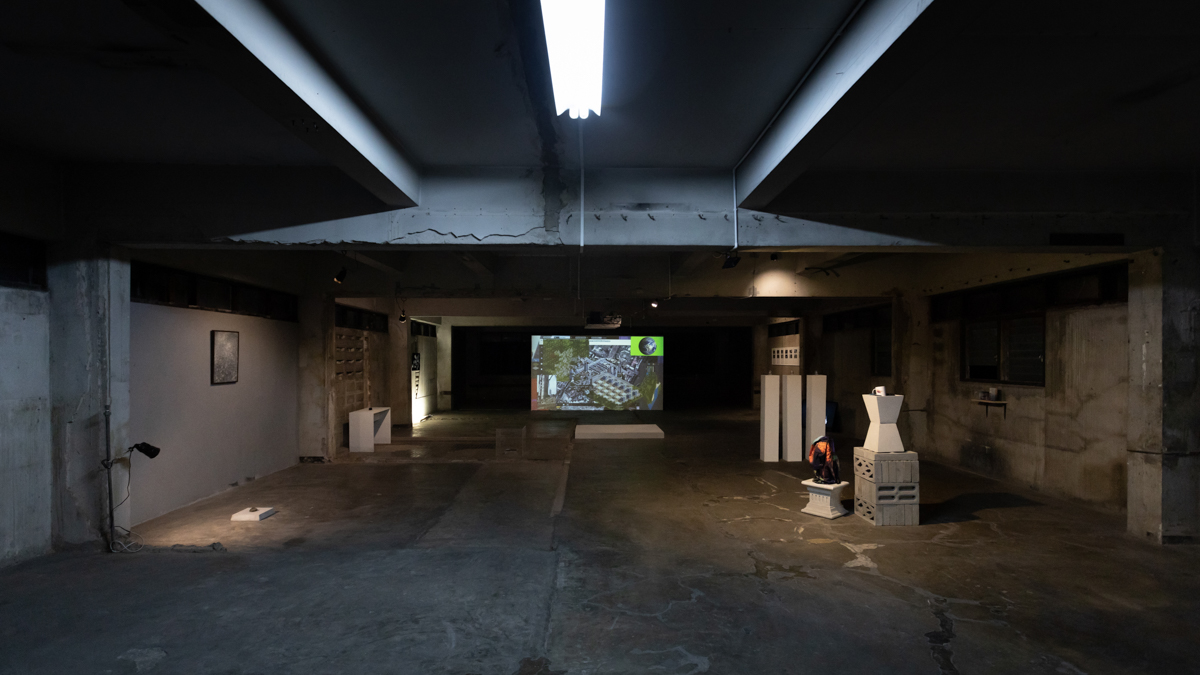
The exhibition ‘Almost Nature’ by Tammarat Kittiwatanokun and Anon Chaisansook originated from the two artists’ interest in the history of an 80-year-old zoo (now permanently closed). Kittiwatanokun and Chaisansook each possess and developed their own differing views and interpretations of the overlapped elements inside this urban zoo.
Kittiwatanokun’s work experiments with the process of photography. With ‘Natural Wonders’ (2018-2019), the artist prints bizarre images taken during his visits to the zoo, from a bird sculpture with a broken neck and paintings of the backgrounds of the cages where all the animals are kept to the monthly-rotating decorations on the tree pots. He prints these images on the objects, which are replicas of the merchandise sold at the zoo’s souvenir shop such as t-shirts, coffee mugs and lockets. The replicas were later put together into an installation piece. “The images are selected for their association with the replicas’ materials more than anything. The three locket pieces have a front, which contains images of animals taken from the background of the museum’s room while the back is actually the earth taken from the zoo. I look and it and it is reminiscent of some sort of a memorial for something,” Kittiwatanokun told art4d.
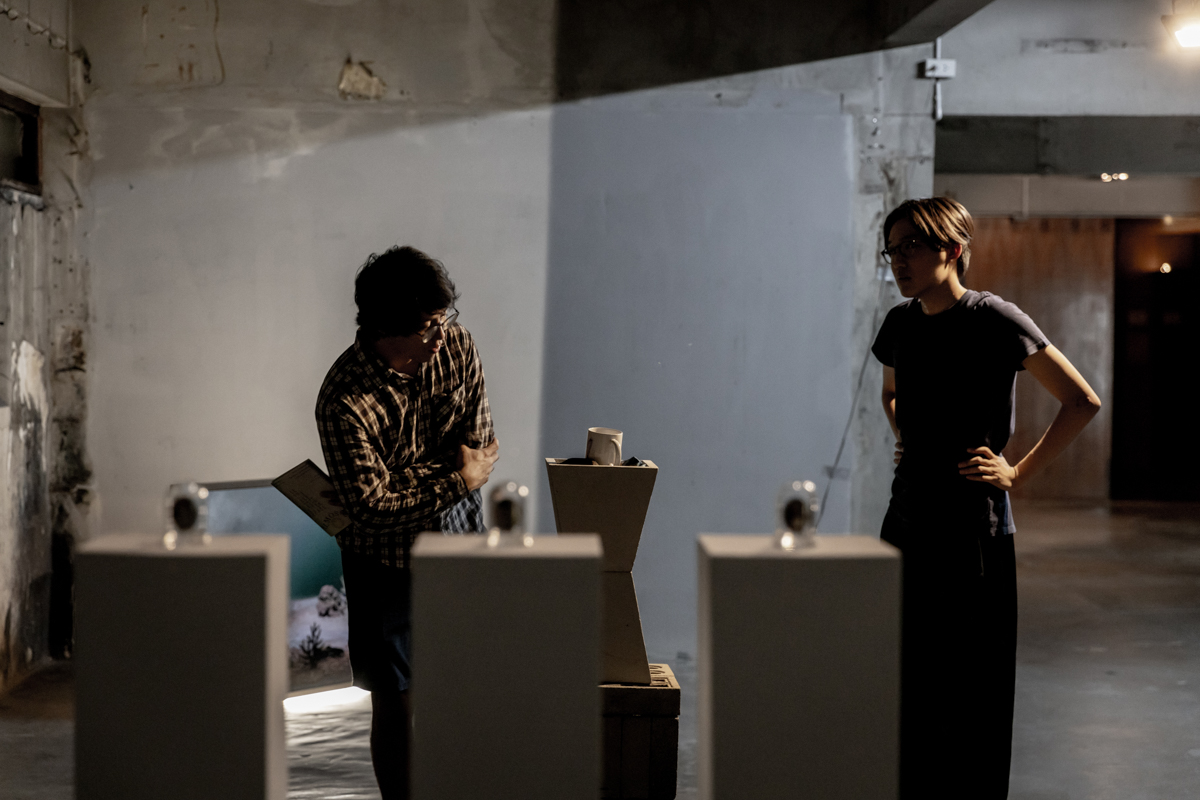
These characteristics of a memorial cause these photographs (a form of someone’s personal memories) and the souvenirs to possess overlapping meanings. All the while, the souvenirs are represented as an official memorial of the zoo. Not only that, but the use of the lockets as a storyteller portrays a nostalgic revisitation of history. In other words, through a reversible narrative, the history of these objects is exhibited and reexamined.
Once history becomes a thing of the past, it deals with the matter of time. Reality Overlap (2019) features photographs of a zoo taken from Google Street view, a digital mapping technology that has become a loophole of time (overlapping on our very own computer screens), which allows for us to revisit the physicality of the past. Nevertheless, the physicality of the space recorded with a digital camera becomes an inactive plain where objects are weirdly superimposed and blackened spots appear. All these elements contribute to the imperfection of the archive, implying that certain things can be recorded but are not able to naturally (normally) transpire reality, even if they are photographs.
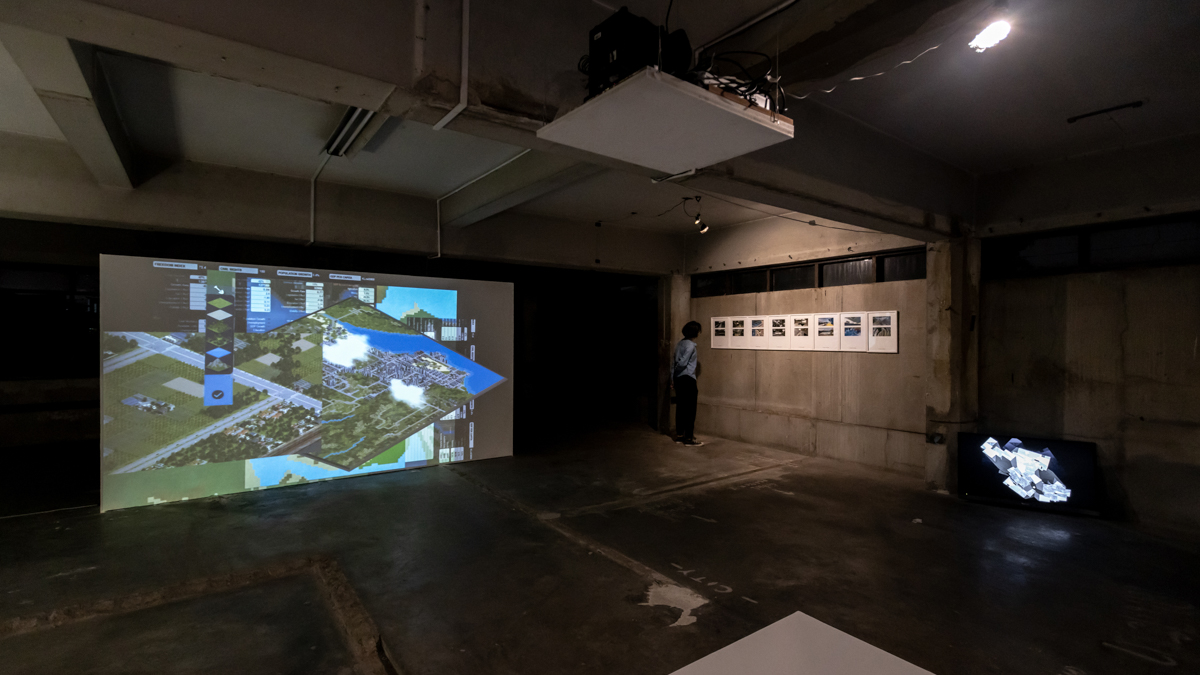
While Kittiwatanokun’s works utilize objects with blatant association with the zoo, Chaisansook intentionally discarded the zoo-related elements while attempting to preserve a certain conceptual structure, which is essentially the ‘virtual nature of the zoo’ itself. Such concept is revealed in ‘not likely to change or fall; firmly established’ (2018), a video installation that projects images of overlapped computer programs displayed on multiple screens. The artist runs the ‘Cityscape’ game on an auto-play mode while inserting moving images of real events in the world such as news footage or videos of buildings being demolished. These images are overlapped in one frame as the reality and virtual world of the game are playing out simultaneously before everything ends with a system error and restarts itself, endlessly repeating the loop. It was as if the artist attempted to blur the line between the zoo and the outside world. The work is told from the aspect of the zoo being a human-operated source of nature, existing within the reality or urban space we are all inhabiting, which is also controlled by another level of power.
Chaisansook’s interest in the physical condition of space is reflected in ‘Recall/Redeem’ (2019), a miniature model of the city blanketed by a gigantic mass of clouds sculpted from the earth the artist took from the zoo. The artist told art4d that the sculpting, or what he refers to as the materialization of memories, is a way of stopping the changing nature of his memories. The work bears an interesting contrast with Shapeshifting (2019) in which Anon uses a computer program to generate a three-dimensional plan of the zoo. Taken from Google Earth, the image is placed at the center of the massive piece of foam board with a sloped surface.

The artist discusses the future of the space that was once the zoo through this particular work. Since the future is a major part of the discussion, the artist created a scenario where visual access to the work is intentionally difficult to achieve. The installation sets the work lower than the average eye level while the placement on the large foam board helps define the range in which the viewers are allowed to see the work. In addition, the plan is printed using a lenticular technique, causing the work’s perceived visuals (of which most viewers need to lower their body in order to see) to be unstable and constantly changing, as one has to move around to get a good look at the piece. At certain points, one can see a flat plain while from another angle, the plan appears to be raised as viewers are left to contemplate the changes that are about to happen to the space.
There are certain similarities to the formation and presentation of the two artists’ different narratives of the zoo. Both Kittiwatanokun and Chaisansook put their emphasis on the overlapping of time within this physical space. This isn’t the first time that Pojai Akratanakul, the exhibition’s curator, has curated exhibitions around such issue. Some of us still remember the Postscript exhibition that took place during the Bangkok Biennial last year revolving around the issue of residual memories. The works mark an interesting movement in Thailand’s contemporary art scene and allude to the fact that perhaps we will get to see more exhibitions of this nature in the future.
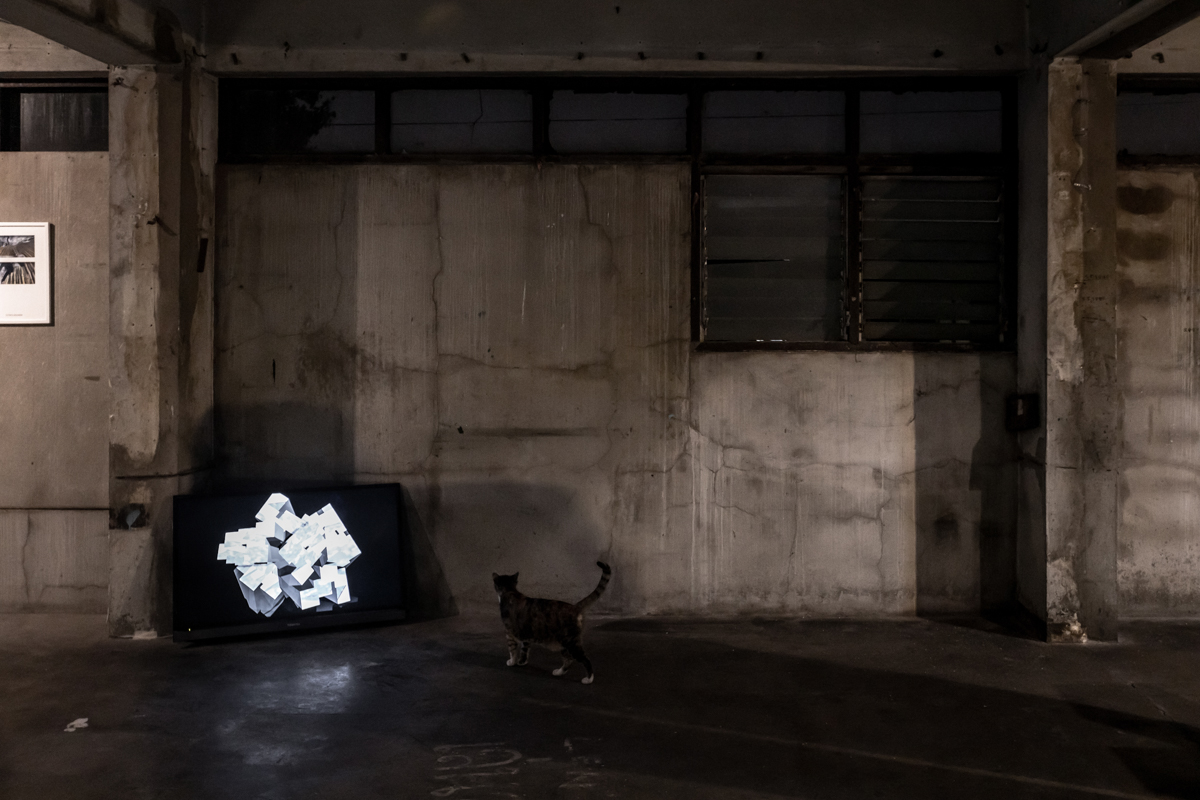
The overall landscape of Almost Nature is an exploration in and testing of the point of connection and disconnection between humans and the nature they live in. As one documents, the other tries to continue to build something out of what still remains. The final resulting world probably causes the meanings of nature to flow between its most common and direct definition, and the state of ‘almost nature/ almost normal’ taking place inside the raw, unpolished space of an old publishing house, which is also ‘simulated’ into an art space.
‘Almost Nature’ takes over the unofficial art space next to Ku Bar, on the third floor of 469, Phra Sumeru Road. The exhibition was held from the 26th of January to the 24th of February 2019.

